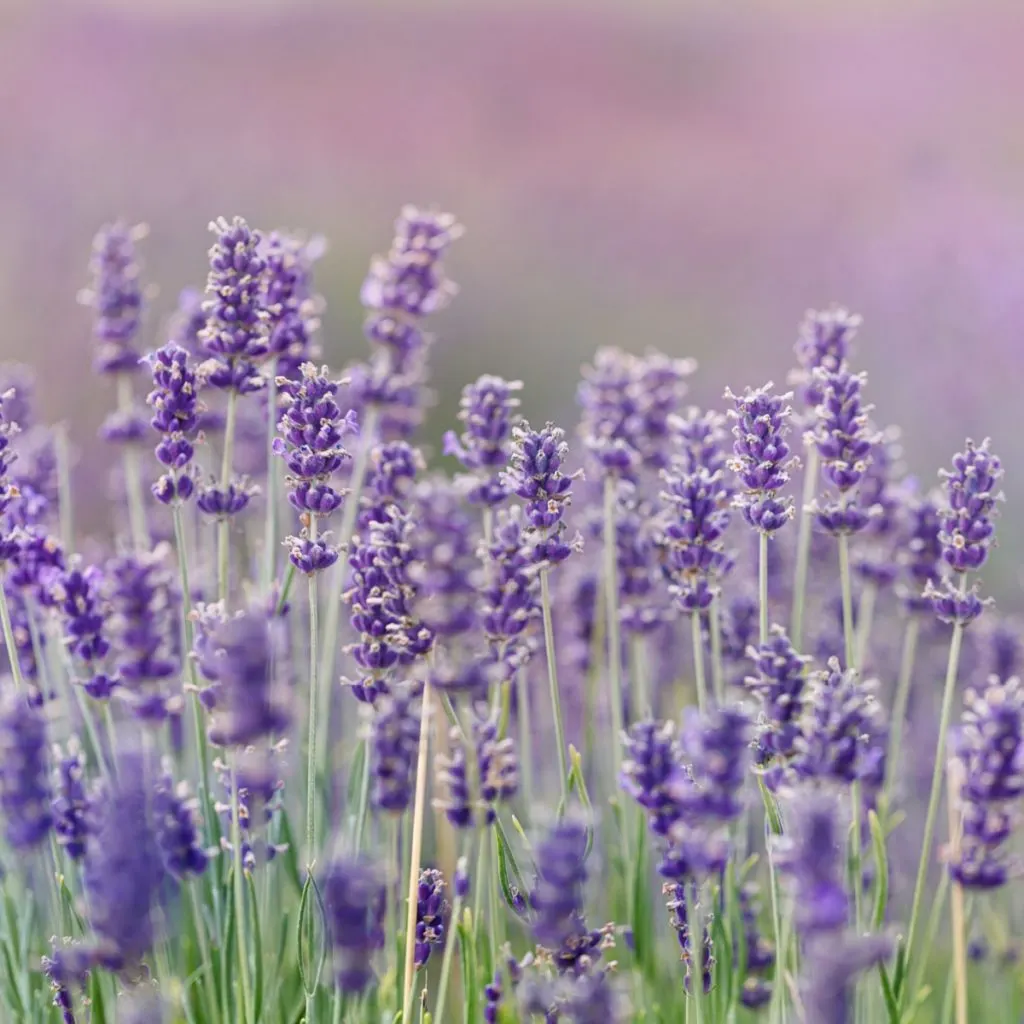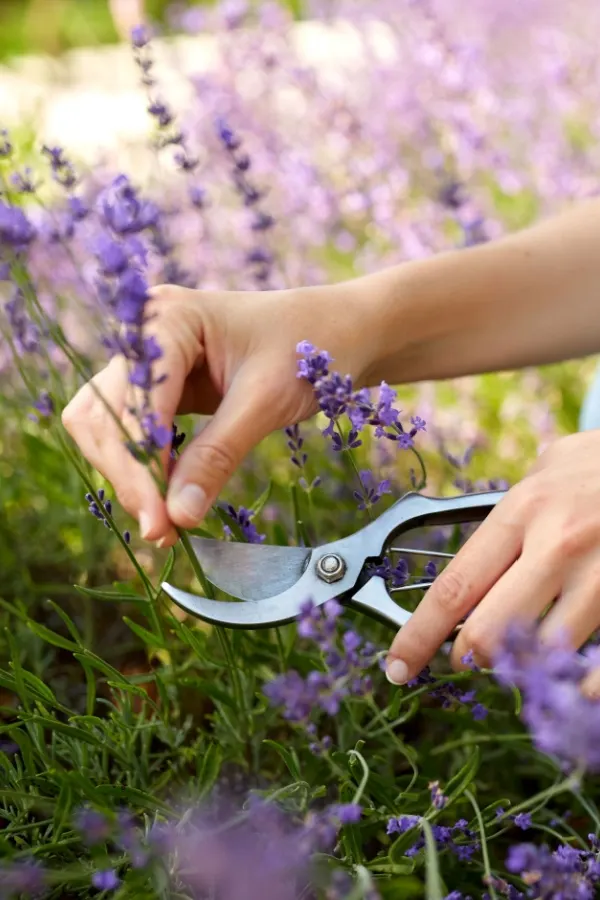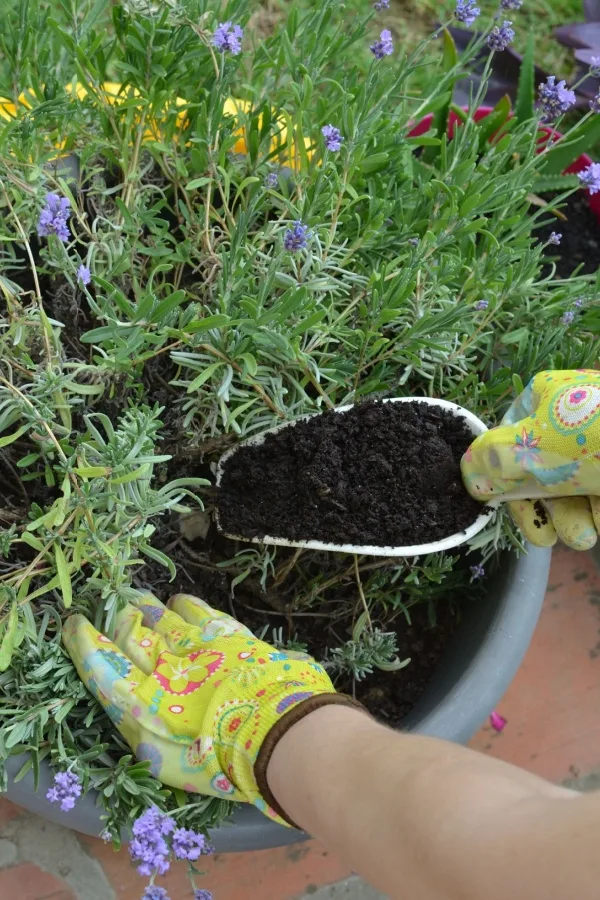Are you looking for a few simple tips on what to do with your lavender plants after they bloom – not just to keep them healthy and beautiful all summer – but to get your plants to bloom a second and possibly even a third time this summer?
As a hardy perennial plant, lavender has so many great traits. Not only is it a tremendously low maintenance perennial, its tall stalks of stunning purple blooms also happen to give off a calming fragrance any time you are nearby.
Even better, those very same blooms also help to bring in all sorts of important pollinators to your property, including two of the best – bees and butterflies!

But if all of that wasn’t enough – lavender also happens to be both deer and drought resistant. And last but not least, while humans might find the scent of lavender to be calming and inviting, pests like mosquitoes, ticks, spiders, gnats, mice and many more steer clear of the strong aroma.
It’s easy to see why lavender is such a popular perennial flower choice. But let’s face it – it’s the blooms of the plant gardeners love most. Which is exactly why you need to jump into action after it blooms to have it flower even more this year!
How To Care For Lavender After It Blooms – How To Get Lavender To Rebloom!
Deadheading Lavender Blooms
One of the biggest factors in getting lavender to bloom for a second time is deadheading the blooms as they begin to die off. Deadheading is simply the process of cutting off old blooms.
Deadheading is a great way to keep your lavender plants strong and healthy. Instead of plants spending energy and resources to try to save the fading blooms, they can instead use that power to concentrate on producing new foliage and flowers.
But when deadheading lavender, you need to act fast. In fact, as soon as you notice that the blooms are fading and losing their vibrancy, it’s time to prune the old flowers off. The sooner you do, the better chance you have of getting it to bloom again.

Thankfully, deadheading couldn’t be any easier. For small plants, you can use a pair of small pruners or snips to cut off the old blooms. For larger plants, you can even use a sharp pair of hedge trimmers to quickly do the job.
Make the cut right above the first set of healthy leaves. This way, you aren’t removing too much of the plant and the plant can continue to grow out and set new bloom stems more easily.
Harvesting Lavender Blooms
If you prefer, you can harvest lavender blooms long before they have faded. This allows you to take advantage of the hundreds of different ways to use dried lavender petals. Instead of waiting until the blooms start to die, harvest them just after a few buds have opened on the stem.
You can then dry the blooms for long-term storage and use. This is actually one of the easiest ways to get your plants to bloom again. By cutting early, the plants save loads of energy and have plenty of time to produce new flowers.
Cutting Back Older Plants – What To Do With Lavender After It Blooms
Deadheading for a second bloom works best with younger, healthier plants that are under 5 years old. Older plants, however, start to get a bit more woody and tough. This makes reblooming a bit more difficult.
With these mature plants, a bit more than simple deadheading might be in order. At this point, more severe pruning may be required. It won’t produce a second bloom, but it will get your plants back in shape.

After plants have reached full bloom in summer, look for any gray, woody stems towards the base of plants. Also, look plants over for a lack of bright color near the top of flowers. If either of those two are present, it’s time for a heavier pruning.
Using a pair of clean pruners, cut plants back to about 2 to 3 inches above the woody, gray stem. Don’t cut plants back all the way to the wood stems since this might damage the plants past the point of being able to set blooms in the future. Product Link: Fiskars Bypass Pruning Shears 5/8” Garden Clippers
The best time to do this is in late summer or even in early fall. Extremely heavy pruning might take a bit longer to recover from, so just be patient. The results will be more than worth it!
Fertilizing & Watering
While most flowering annuals and perennials can benefit from fertilizers in order to bloom, lavender is not one of them. In fact, providing lavender with too many nutrients can actually halt it from blooming altogether.
One thing you can do though is to use compost as a mulch around the base of plants after deadheading or pruning. Even though compost is packed full of nutrients and organic matter, it won’t overpower the lavender.

Instead, it provides plants with a low, steady dose of energy to keep plants strong and vibrant. As always, compost really is the answer to long term plant and soil health! See our article How To Use Compost In Your Garden & Flowerbeds
Much as with fertilizing lavender plants, less is more when it comes to watering. Lavender is very susceptible to root rot, so overwatering is often the reason for its lack of growth and blooms.
Since lavender is drought resistant, it can handle dryer than average soils. Only water the plants in cases of extreme drought – and do so lightly. Allow the soil to dry out completely between watering.
Here’s to providing the proper care to your lavender plants after they bloom and helping encourage a second – or even third bloom this summer!
Simple Garden Life
Follow Our Facebook Page For Even More Great Tips! Simple Garden Life Facebook Page
Simple Garden Life is a website dedicated to keeping gardening fun, simple and enjoyable! We publish two new articles each week along with a new garden podcast episode every two weeks. This article may contain affiliate links.
